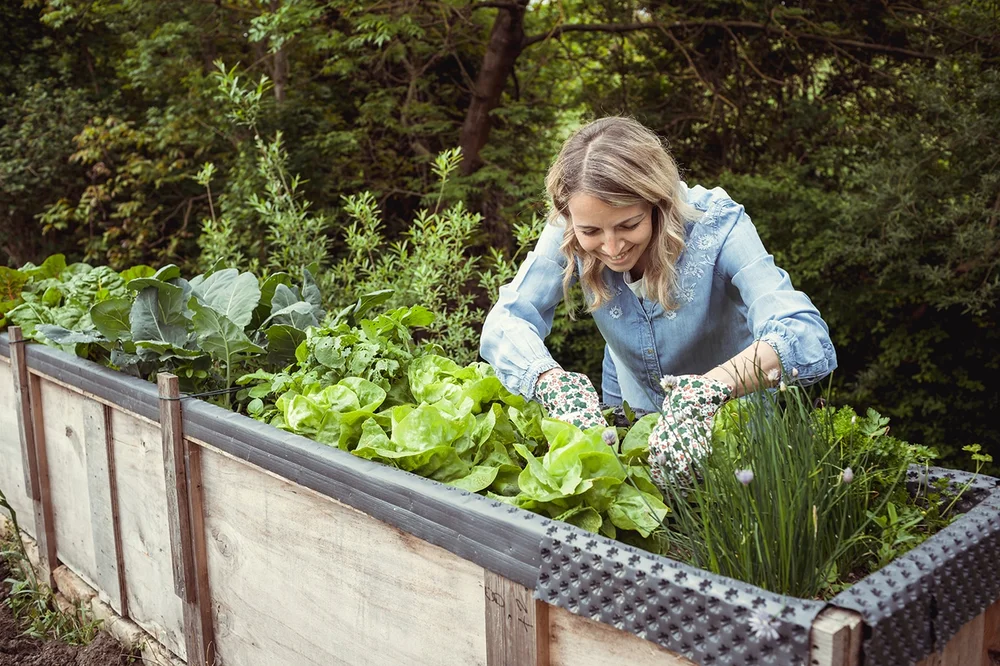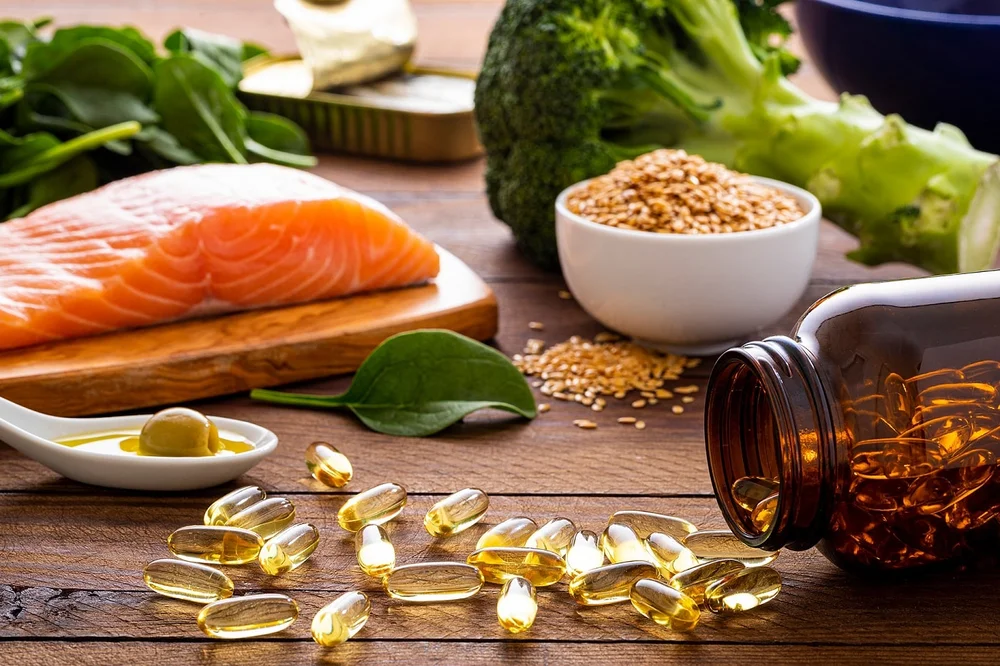Foodscaping: How to Grow Healthy Foods In Your Own Garden!
One of the great joys of spring is the opportunity to get outside and garden.
If you have a yard or even a patio, here’s a wonderful new trend you may want to incorporate into your gardening plans: Foodscaping.
Foodscaping is the modern term used for an age-old practice of integrating edible plants, fruits, and vegetables within and throughout a landscape design. It’s also called edible landscaping.
Edible plants bring color, complexity, and excitement to your landscaping, while providing highly nutritious and delicious fruits, vegetables, and herbs that can both enhance your culinary creations and well-being, while saving you money.
Here’s why you may want to consider foodscaping for your yard or patio – as well as ideas to get your started!
Here Are Some of the Top Benefits of Foodscaping
Here are several of the many benefits foodscaping offers:
Saves Money
If you grow your own produce – especially typically expensive produce such as organic avocados, tomatoes, and berries – you can really save money. Additionally, edible landscaping can save you the expense of staple flavorings such as lemons, garlic, and herbs such as oregano, rosemary, basil, parsley, and cilantro.

Growing your own produce delivers better nutrition (and makes it more likely that you’ll eat fruits and vegetables). Research has shown that organically grown varieties of certain produce can provide significantly greater levels of vitamin C, iron, magnesium, and phosphorus than non-organic varieties of the same foods – while also being dramatically lower in nitrates and pesticide residues. Organic produce typically provides greater levels of important antioxidant phytochemicals (such as carotenoids, flavonoids, and anthocyanins) too.
Growing Food Is Fulfilling and Wholesome
There’s something primal about growing your own herbs, fruits, and vegetables. Humans have been doing it for millennia. If you have children, foodscaping allows them to learn where food comes from because they’ll see it and taste it. Participating in this miracle of nature is a terrific way to connect with nature, which is sorely missing in our modern lives. The creative expression involved in foodscaping as well as the resulting visual and sensual beauty are also good for the spirit.
Tastes Delicious
When was the last time you ate a fresh strawberry from the garden, or a juicy tomato off the vine in summertime, or flavored an Italian dish with fresh, homegrown basil? Growing your own produce and herbs makes food more delicious! Your garden’s bounty may also inspire inventive seasonal dishes and baked goods.
It’s Eco-Friendly
You’ll spend less money on produce that’s often sprayed with chemicals and needs to be trucked or flown, sometimes vast distances, to reach your local market. This saves on precious resources, reducing your personal carbon footprint.
If you swap your lawn for a foodscaped garden, you’ll use less water and resources, ecologists have found. Additionally, a foodscaped garden provides more biodiversity and habitat for birds, honeybees, butterflies, earthworms, and more.
Good for Your Mood and Focus
Horticulture therapy is known to offer mental health benefits such as improved mood. It’s associated with reduced aggression and behavioral issues in young people, as well as improved memory and attention span in people who struggle with focus and attention.
How to Start Foodscaping
Are you excited about the idea of foodscaping? Here’s some additional information to help you think about and plan what you’d like to do.
Design
Foodscapes can contain a mix of shrubs, vines, trees, grasses, and ground cover. Trellises and arbors, raised beds and containers, pathways and other hardscapes can add visual depth to your design. Let color, texture, and scent inform your choices for both edible and non-edible plants.
If you’re adding edible plants to your garden or patio for the first time, horticulturists make these suggestions:
- Start small
- Do your research to find out what’s easy to grow, and grows well in your local climate
- Factor sunlight, soil quality, water needs, and pest control into your selections
- Choose edible plantings that are both ornamental (artistically beautiful) and practical (you like eating them)
If you want specific suggestions, here are few to think about that deliver big on savings, beauty, flavor, and health benefits:
Colorful Vegetables
Colorful vegetables generally offer a greater amount of health-boosting antioxidants and phytonutrients – while offering visual appeal. Here are a few to consider: brightly colored cherry tomatoes; green and purple kale and rainbow chard; purple cauliflower; ornamental eggplant; peppers of all kinds; galactic lettuces; and artichokes.
Berries
Naturally low in sugar and high in vitamins and antioxidants, berries are fantastic for brain health. They’re a gorgeous and delicious addition to a foodscaped garden. (They work well in planters and pots too for those with patios.)
Strawberries are excellent for ground covering and amazingly easy to grow. Blueberries can be grown in larger pots or in-ground. Raspberries and blackberries grow well on a trellis, arbor, or fence.
Trees
Adding a fruit tree to your garden provides shade, color, and drama. There’s also nothing more exciting than picking fruit off the tree!
There are now dwarf fruit trees available that can be grown in smaller yards. Keep in mind that many fruit trees can take a few years before they bear fruit. Fruit trees bought from most nurseries or garden centers are 1-2 years old.
Having a lemon tree, avocado tree, or other citrus tree can be indispensable and money saving. In the fall, a persimmon or pomegranate tree will reward you with beautiful autumn color and save you money as well. The bounty from your tree(s) can also serve as a lovely gift to family and friends.
Herbs
Herbs can enhance your garden and flavor your favorite dishes. They work well on patios too.
Sage comes in gorgeous colors and textures. Basil and rosemary smell wonderful. (Rosemary is also quite hardy and is a wonderful shrub that blooms once a year.) Fennel, dill, cilantro, oregano, parsley, and tarragon offer different shapes and textures, while ensuring you have a full stock of herbal spices at the ready. If you’re an herbal tea drinker, you might want to have mint and chamomile in your garden too.
Keep It Simple
Whatever you decide to grow, keep it simple to start. If you want to go big, get the help of a professional. Have fun and enjoy the fruits (literally) of your labor!
At BrainMD, we’re dedicated to providing the highest purity nutrients to improve your physical health and overall well-being. For more information about our full list of brain healthy supplements, please visit us at BrainMD.
- What Are the 7 Healing Frequencies and Benefits of Sound Healing? - April 26, 2024
- Here Are Some of the Best Tension Release Exercises to Help You Feel Your Best! - April 17, 2024
- Foodscaping: How to Grow Healthy Foods In Your Own Garden! - April 12, 2024



